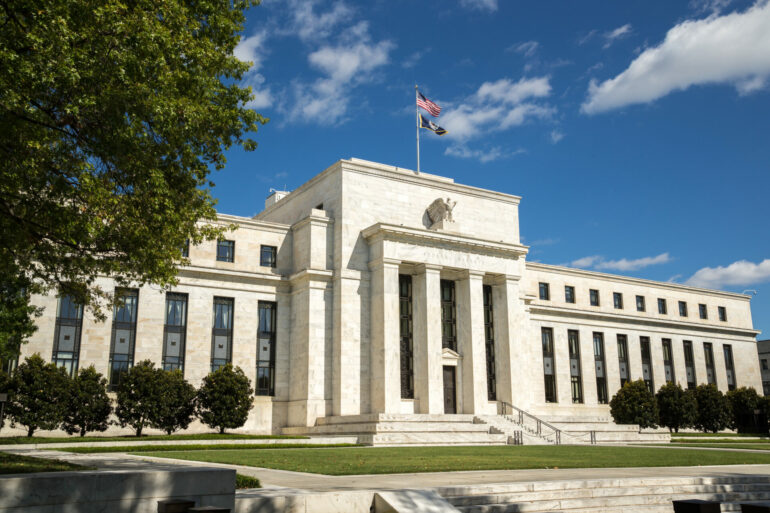The BoE’s monetary policy committee meets next week amid evolving expectations for UK interest rates after recent inflation prints continued to surprise on the upside.
MPC members will have a lot to digest before their decision on Thursday 22nd June: the April inflation reading last month came out after the May MPC meeting, but the laser focus will be on the May consumer prices index data released next Wednesday (21st June – the day before the end of the MPC meeting), which should provide more clarity on how stubborn price pressures are in the UK economy.
Fears over the potential obstinacy of UK inflation were fuelled by hot jobs market data this week showing private sector wage growth climbing to 7.6% in the three months to April, which in turn sent gilt yields soaring to levels higher even than in the bond market shock after the Truss/Kwarteng mini-Budget last autumn. Two-year gilt yields rose to 4.9% this week compared to a peak of 4.6% after the mini-Budget.
Since then BoE Governor Andrew Bailey has sounded a warning shot on the need to get inflation down, the Chancellor has weighed in by backing the Bank to “do what it takes”, and markets are now pricing in the UK Bank Rate to rise to an eye-watering 5.7% – fully 1.2% more than the current 4.5%. It was only a few weeks ago that rate watchers were calling an imminent peak for the Bank rate.
That has caused serious ructions in the mortgage market, with lenders withdrawing products en masse and falling over each other to reprice. One former BoE rate setter believes that the widespread popularity of five-year mortgage fixes in the last few years could be one reason behind the delay in UK rate rises taking effect.
Michael Saunders, who served on the MPC until August, said the number of households on fixed mortgage deals “makes it harder for [the MPC] to calibrate the correct policy path”, as so many borrowers are yet to come off favourable loans and face the new mortgage rate music.
If BoE estimates that only a third of the rate increases since the end of 2021 have fed through to consumers and businesses are near the mark, then many more households and businesses could be in for a rates shock as reality suddenly feeds through..
So, the question is – until any better news on price pressures arrives – how fast will the MPC go? While a 0.25% move currently seems more likely next week, a 0.5% increase in Bank Rate is not unthinkable, with hawks on the MPC perhaps emboldened by the Fed’s soundings – but much will depend on the inflation reading the day before.
What happened in the US?
The Fed’s hold was in line with market expectations and means the target range remains 5.0% – 5.25%. The Fed also published their quarterly ‘dot plot’ which shows where committee members see rates heading in the future. It showed rates peaking this year at a level of 5.6%, which is approximately 50 basis points higher than they had been expecting at their March meeting. Expectations for the year end 2024 and 2025 were also revised higher, to median values of 4.6% and 3.4% respectively.
So the long awaited Fed ‘pause’ has finally arrived, but in rather more hawkish fashion than markets might have expected. The updated dot plot reveals that Federal Reserve officials expect not one, but two more rate increases before a peak in rates by the end of the year.
Economic data has generally been stronger than expected. Inflation, particularly the ‘core’ excluding food and energy figure, has not fallen away as quickly as some officials had expected, and the jobs market remains extremely resilient. The Fed’s own projections released yesterday revealed a more negative outlook for inflation and a more positive stance on both growth and jobs.
The contradiction of not increasing rates at this meeting but signalling more to come was difficult to communicate in the press conference which followed the meeting. Fed chair Jerome Powell said that pausing at this juncture would give the committee “more information to make decisions” and would “allow the economy a little more time to adapt as we make our decisions going forward”. He also said that he expected the next meeting in July to be a “live one”, sending an indication to markets that an increase is likely then.
Committee members of a more dovish outlook likely remain concerned about the recent failure of three mid-sized banks, which began with troubles at Silicon Valley Bank in March. Powell sounded a note of caution on this yesterday, saying “We don’t know the full extent of the consequences of the banking turmoil we’ve seen”, adding “It would be early to see those”.
Market expectations before the meeting were for one further rate hike, so there was some surprise as a further increase was priced in. Two-year treasury bond yields, moved up nearly 20 basis points on the announcement before settling back slightly. The US dollar strengthened relative to sterling by about half a cent and the equity market fell before regaining previous levels.
David Goebel is an associate director at Evelyn Partners




